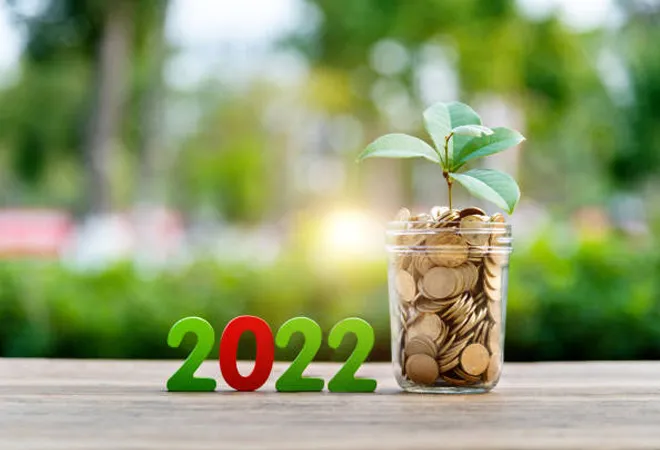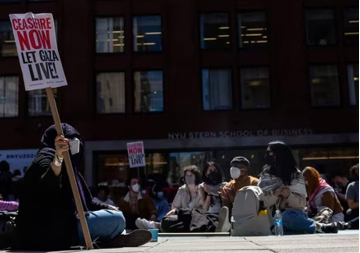
This brief is a part of the Budget 2022: Numbers and Beyond series.
India’s Union Budget 2022 openly declares its avowed objective to lay the foundation of and provide for a blueprint for the economy over the next 25 years. The Budget speech apparently gives the impression of a paradigm shift from addressing the traditional macroeconomic parameters (like income growth, fiscal parameters, consumption, investment, savings, etc.) to addressing development more holistically, driven by the pathways drawn by the global sustainable development goals (SDGs). Rather, this has been the trend of the Union Budgets at least over the last three years. This year, the Finance Minister Nirmala Sitharaman was possibly a bit more emphatic on embarking on the pathway of a “Green Transition”. The term “sustainable” has been used in the Budget speech multiple times to stress on this. Of course, India is leading the world in terms of growth numbers in this phase of economic recovery, despite being afflicted by the pandemic in no less intensity than other nations. Therefore, it is only pertinent that India acknowledges the changing paradigms of global development governance driven by the SDGs in its development vision, as the economy traverses the next 25 years of its journey.
The Union Budget 2022-23, in the process, lays down the vision that Prime Minister Modi outlined in his Independence Day speech. These are: a) Complementing macro-level growth with micro-level well-being; b) Engendering the digital economy and Fintech, and promoting development, energy transition, and climate action, enabled by technology; and c) Exploiting the “virtuous cycle” arising from the complementarity of private and public investments, with public capital investment enabling the process of “crowding in” of private investment.
Global development governance is driven by the SDGs that acknowledge the existence of the “policy triangle challenge” or the irreconcilable trinity of efficiency, equity, and sustainability.
Interestingly, there are quite a few trade-offs as proposed here. The Union Budget seems to take up the challenge of combatting these trade-offs face-to-face. Let us devise this trade-off from two perspectives. Global development governance is driven by the SDGs that acknowledge the existence of the “policy triangle challenge” or the irreconcilable trinity of efficiency, equity, and sustainability. It seems that while the Budget attempts to take up the “policy triangle challenge”, a more careful reading will suggest that certain trade-offs have not been properly understood. This can lead to a policy failure in development governance.
Here, we’ll first delve into the concern of equity versus efficiency. The Budget has talked about some of the critical issues of education, health, human development, MSMEs, backward classes, and vulnerable communities. These are welcome steps. However, the budget has fallen prey to the “paradox of thrift” phenomenon, as is evidenced from the lack of any form of tax relief to the salaried middle class. The Indian growth story has largely been a consumption-driven one over the last three decades. Interestingly, the recent growth revival over the first two quarters of 2021-22 has largely been driven by private consumption, which constitutes more than 55 percent of the GDP. One thing is for sure: This consumption component has to be driven largely by the salaried middle-class and lower income groups, who reveal a higher marginal propensity to consume than the rich and super-rich. This is evidenced from the fact that the increasing income inequality in India has led to a faster increase in wealth inequality between 1991 and 2020. This implies that a rise in the income of the lower income groups has a higher chance of getting into the consumption channel of the economy than an increase in income of the higher income groups who put extra incomes into the savings or asset channel, thereby, creating wealth. Therefore, if consumption-driven growth needs to be spurred, it is important that there should be more money in hands of the middle- and lower-income groups. It would have been pertinent to remember that the Indian economy’s consumption figures are yet to attain the pre-pandemic levels. Hence, there should have been more measures either in the forms of personal income tax concessions or through transfers to create demand, and to compensate the revenue deficit either through wealth tax or better rationalisation of the GST. Therefore, such “paradox of thrift” (that states that increasing personal savings are detrimental for growth) phenomenon could easily have been circumvented, and both growth and inequality could have been addressed through a Keynesian response mechanism.
If consumption-driven growth needs to be spurred, it is important that there should be more money in hands of the middle- and lower-income groups.
Though the Budget speech mentioned “one nation, one tax” while talking of the GST, such a phenomenon is still a distant dream. Rather, the compliance issues of businesses with GST still loom large, thereby, adding to the cost of doing business, much in contrary to claims of ease of doing business. Of course, as the Finance Minister mentioned, the GST collection in January 2022 has been the highest so far, but the reason for that is largely the migration of many offline unregistered services of the pre-pandemic era to the digital platform during the pandemic era. This may not have augured well with many such businesses that could not find space in the digital world. Therefore, the concerns of reconciling between efficiency and equity have hardly been addressed in the Union Budget.
Next is the concern of sustainability of the development process. The Budget claims that it intends to lay the pathway for the next 25 years, and quite rightly has talked of climate action and energy transition even while talking of large-scale infrastructure development for roads, railways, airports, ports, mass transport, waterways, and logistics under the PM Gati Shakti. Connectivity is indeed a key factor for development, but creation of infrastructure through large-scale capital expenditure has also resulted in a change in land-use from forests and grasslands to alternate uses, thereby, causing huge losses in biodiversity and ecosystem services. Though the budget speech talks of climate action, it is not clear whether the compensatory afforestation or eco-restoration will be followed up with such infrastructure projects for climate action. Research has shown that losses in ecosystem services, when monetised, often exceed the perceived gains from such projects.
Connectivity is indeed a key factor for development, but creation of infrastructure through large-scale capital expenditure has also resulted in a change in land-use from forests and grasslands to alternate uses, thereby, causing huge losses in biodiversity and ecosystem services.
It is in this vein that the Union Budget has sacrificed the concern of sustainability in its quest for equity and efficiency on at least two counts. The first is with its promotion of paddy and wheat through the procurement and the minimum support price (MSP) mechanisms. It has been convincingly argued that some of the water conflicts in India are largely caused by irrigated agriculture by promoting wheat and paddy as the two “umbrella” crops through which food security is defined in India. The Budget has just added more fuel to that fire. Rather, the MSP can be used to alter the terms-of-trade and make much less water-consuming millets more lucrative for production. This can help in water savings, in keeping water instream, and in helping resolve some of the more intensive water conflicts (e.g.,Kaveri, Teesta, or the Punjab-Haryana conflicts).
The second issue is with river interlinking. The Budget states, “Implementation of the Ken-Betwa Link Project, at an estimated cost of INR 44,605 crore will be taken up. This is aimed at providing irrigation benefits to 9.08 lakh hectare of farmers’ lands, drinking water supply for 62 lakh people, 103 MW of Hydro, and 27 MW of solar power.” It is unfortunate that so far no holistic assessment of the Ken-Betwa Link has been conducted that can state the social and ecological costs (in monetary terms) of such a link over time. This is a classic example of how myopic growth ambitions impede on long-term sustainability concerns. The Budget also states, “Draft DPRs of five river links, … have been finalised. Once a consensus is reached among the beneficiary states, the Centre will provide support for implementation.” The reductionist engineering and narrow economic gains-centric Detailed Project Reports (DPRs) are largely oblivious of the massive long-term losses that such projects entail. There are enough examples in the Global North and even in South Asia to buttress such a claim.
The reductionist engineering and narrow economic gains-centric Detailed Project Reports (DPRs) are largely oblivious of the massive long-term losses that such projects entail.
On many counts, the Budget has been talking of enabling business competitiveness (and used the term “ease of doing business” despite the World Bank fiasco). Past ORF research has already shown that promotion of the SDGs help in making businesses more competitive. Therefore, it is not necessary that growth has to come at the cost of sustainability concerns; rather they can be juxtaposed in the development paradigm.
As India rises from the pandemic-induced economic slump, the path towards recovery needs to embrace a holistic development pathway. Broadly, this should be based on two key principles: a) Growth in the human (through health and education) and the physical capital, should not come at the cost of the natural capital: Global best practices that can ensure co-existence and growth of all the three forms of capital should be key to achieving this; and b) Promote a more equal India through distributive justice and reduced inequality to boost long-term economic growth: The UK and Nordic economies’ welfare state bear lessons for India and the Global South. Unfortunately, the Union Budget gives the impression that such concerns are yet to be acknowledged in the North Block.
The views expressed above belong to the author(s). ORF research and analyses now available on Telegram! Click here to access our curated content — blogs, longforms and interviews.




 PREV
PREV


